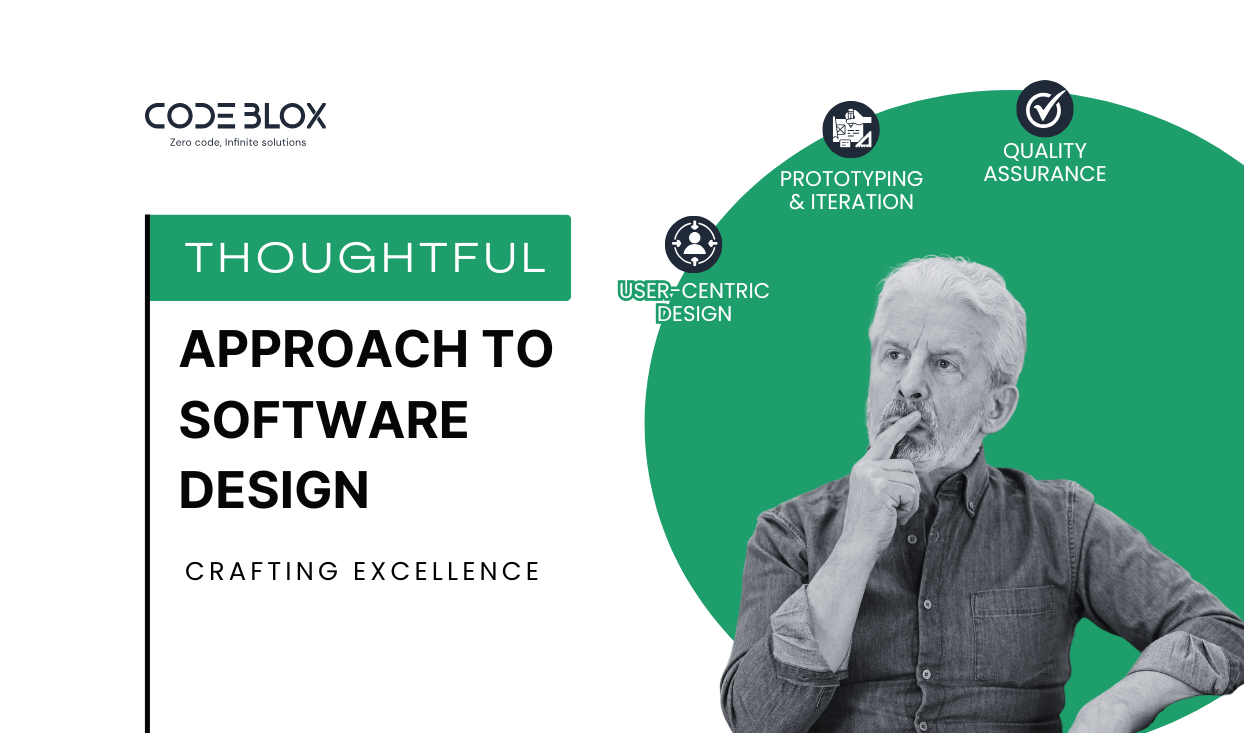Crafting exceptional software solutions exclusively designed for your business needs. Learn More

In the fast-paced realm of software development, where innovation is the driving force, adopting a deliberate and well-considered approach to software design becomes paramount. The process is akin to architecting a blueprint for a skyscraper — every decision made in the design phase has a ripple effect on the entire structure. Let's explore a thoughtful approach to software design that not only ensures functionality but also lays the foundation for a robust, scalable, and user-friendly application.
Understanding Requirements:
The journey begins with a deep understanding of the project requirements. What problem is the software solving? Who are the end-users, and what are their needs? By thoroughly comprehending the project's scope and objectives, designers can tailor their approach to align with the unique demands of the application.

User-Centric Design:
User experience (UX) lies at the heart of successful software design. The best applications seamlessly integrate functionality with an intuitive user interface, ensuring that users can navigate and interact with the software effortlessly. The user-centric approach involves conducting usability studies, gathering feedback, and iteratively refining the design based on real-world usage.
Prototyping and Iteration:
Prototyping serves as the bridge between abstract concepts and tangible designs. It allows designers to test ideas, gather feedback early in the process, and make informed decisions. An iterative design process acknowledges that perfection is a journey, not a destination. Continuous refinement and adjustments based on user feedback and evolving requirements result in a design that evolves and improves over time.

Scalability and Flexibility:
A well-designed software system anticipates growth. Scalability is not just about handling increasing user loads but also adapting to changing requirements. A flexible architecture accommodates new features, technologies, and integrations seamlessly, ensuring that the software can evolve with the ever-changing technological landscape.
Collaboration and Communication:
Effective software design is a collaborative effort that involves close communication between designers, developers, and stakeholders. Clear communication channels ensure that everyone involved shares a common vision and understands the design principles. Collaboration fosters an environment where diverse perspectives contribute to a more robust and comprehensive design.
Testing and Quality Assurance:
Quality assurance is not just a phase; it's ingrained in every step of the design process. Rigorous testing identifies and addresses potential issues early, reducing the likelihood of bugs and glitches. Automated testing tools and methodologies play a crucial role in ensuring the reliability and stability of the final product.

Documentation:
Comprehensive documentation is the backbone of a well-designed software system. From design principles and architectural decisions to code comments and user manuals, documentation ensures that every aspect of the software is transparent and understandable. This becomes especially crucial for future development, maintenance, and onboarding of new team members.
In conclusion, the process approach to software design is a holistic journey that demands thoughtful consideration at every turn. By embracing user-centricity, collaboration, scalability, and a commitment to quality, designers can navigate the complexities of software development with finesse. The result is not just a functional application but a digital masterpiece that stands the test of time.




